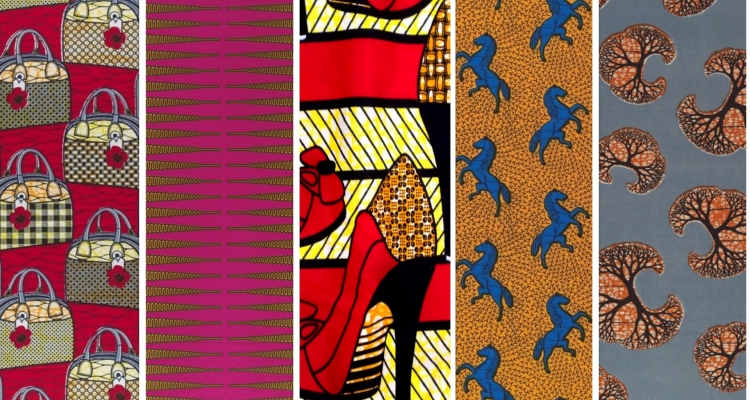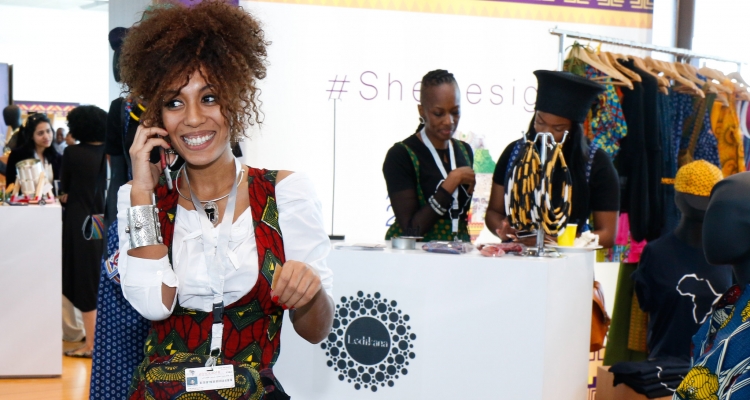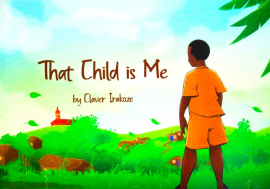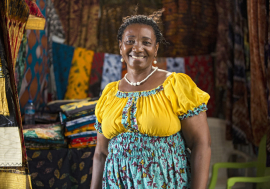In most West and Central African main markets, some local apparel shops or even online, it is easy to buy Michelle Obama’s handbags, Michelle Obama’s shoes or [Kwame] Nkrumah’s pencils.

Except these aren’t exactly items that the US former first lady or Ghana’s first president has used. Nor are these real shoes, handbags or pencils.
Still, on a mid-morning shopping trip last January, Hawa Diallo and her friend Naa Ayorkor Tetteh walked the crowded alleys of the Marché HLM (HLM Market) in Senegal’s capital Dakar, hoping to score a good deal on any of the items. The market is known to be the best place to find all things fabric.
Indeed, the shoes, handbags or pencils they were looking for are actually popular names for different designs and color patterns specific to one of the most enduring and widespread clothing materials from West and Central Africa: a distinctively colourful and elaborately designed 100 per cent cotton fabric commonly referred to as the “wax hollandais”, “ankara” or “kitenge”.
“Riotously colorful, densely patterned, and unassailably fabulous,” is how Sara Archer, an art writer, described “wax hollandais” in a 2016 news report for Hyperallergic, an American art and culture online magazine. At the time, the fabric and the fashion it has inspired were part of an official exhibition at the Philadelphia Museum of Art, about an hour-and-a-half drive from New York City.
The origin of the printed fabric and its popularity in Africa date back to the mid-1800s when a Dutch company, now named Vlisco, traded it in West Africa’s coastal towns. Since then, the fabric has been a mainstay of African fashion.
The generic “wax hollandais” reference originated then. But the name has now extended to any similarly printed fabric, irrespective of the print technique or the manufacturer.
Over the last decade, the popularity of the fabric has grown outside the continent, including among the African diaspora and African American communities in the US.
Beyond the fashion however, the unique tradition of naming the patterns as they come on the market, make them one of the best chronicles of historical and contemporary events, reflecting social trends or celebrating social rites of passage.

“Kofi Annan’s brains”
The most iconic of the fabrics, recognisable the world over, is Angelina, a V-shaped ornate main pattern with a dotted band on the edge, reportedly inspired by Ethiopian clothing tradition. The name came from a very popular song by a Ghanaian high-life band released around the time the fabrics were offered for sale.
Angelina comes in several colour combinations and is almost always worn in dashiki style. The dashiki is a pull-over outfit – either as a shirt or dress - with the V-shaped pattern forming the collar at the front while the same pattern is centrally displayed at the back.
Another design, showing clusters of three trees grouped together in a brain-like shape, is called Kofi Annan’s brains. The name came about because the pattern design hit the market around the time Mr. Annan was ending his second term as United Nations Secretary-General. The brain-like shape pattern was seen as a symbol of his brilliant mind.
Following former US president Barack Obama’s historic election in 2008, consumers found ways to honor him and first lady Michelle Obama. Two of the fabric patterns that hit the market around the same time were called Barack Obama’s heart and the other Michelle Obama’s handbags.
Mrs. Obama later visited a few countries in Africa, and another pattern was named after her shoes, symbolizing her setting foot on the continent.
As for Nkrumah’s pencils, the pattern celebrates the sharpness of the intellect of the legendary pan Africanist.

None of these names were from the company itself but from consumers cleverly linking fashion to history, celebrating famous people or expressing the trends of the moment.
Afrochic
The same patterns can have alternative names in different countries.
In the Democratic Republic of the Congo (DRC) for instance, Angelina is called “Ya Mado” because dancers in a video of the song were wearing the fabric pattern.
Another pattern, commonly referred to as cha cha cha, evokes the 1960s legendary Congolese rumba tune titled “Independence cha cha”. In Ghana the same pattern is called Senchi Bridge after a suspension bridge on the Volta River that swings widely when travelled on. In neighbouring Togo cha cha cha is referred to as the back of the chameleon.
Whether in the DRC, Ghana or Togo, these names chronicle life events, reflecting milestones such as independence or the end of war, or changes in fortunes or personal circumstances and more.
For a long time, women were the fabric’s largest consumers for its simply designed attires - usually a two-piece skirt and top, or a three-piece top, bottom and waistcloth.
Men would mostly make simple shirts out of the fabric or an ensemble of a top and trousers that is worn on special occasions.
But “things have changed,” Johannesburg-based fashion designer Tanya Kagnaguine told Africa Renewal from South Africa. “The offering is no longer just about a two or three-piece usual wear. It is about offering new contemporary designs capable of rivalling ready-made attire imported from Europe.”
These new designs, Tanya calls them Afrochic, are a blend of traditional African designs and modern and creative fashion wear.
These fabrics have always been part of our daily lives, part of our culture, and part of our moments of celebrations and of sorrows
American artists such as Beyonce Knowles, Rihanna, Madonna; politicians and world leaders like Nelson Mandela, Ghana’s president Nana Addo Dankwa Akuffo Addo, US former first and second ladies Michelle Obama and Jill Biden, have all embraced the fabric and its Afrochic designs.
As the revival of the ankara/kitenge was taking off in the mid-2000s, Tanya left her high paying international job and set up her own company Fafa Creations to respond to growing local demand after the apartheid years.
Really African?
But as much as the ankara/kitenge is considered the most iconic of all African fabrics, a few critics point out that Vlisco, which is still in business centuries later, is neither African nor based in Africa.
They also point out that the batik technique distinctive of the original fabrics is reportedly of Indian origin, first introduced to Indonesia where it failed to gain traction, before being exported to West Africa, hinting that African pride in those prints might be misplaced.
“It ours, nonetheless because we made it so,” Esi Atiase, a Senegal-based digital entrepreneur counters.
“These fabrics have always been part of our daily lives, part of our culture, and part of our moments of celebrations and of sorrows,” she says. And for her, it is fitting and proper to claim and celebrate that heritage.
These are our stories
To honor that tradition and celebrate this heritage, Esi and her colleagues created an animated video mapping of some of the classic patterns. They debuted it at the 2016 Dakar biennial art festival before showing it later that year at the UN Educational, Scientific and Cultural Organization (UNESCO) headquarters in Paris, France.
One of the classics they digitally animated was the Jumping Horse, also known as “Je cours plus vite que ma rivale,” meaning “I run faster than my rival”.
In West Africa, the design pattern came out in the years leading to the 1995 Beijing women’s conference, at a time of debate on women’s rights and the legal status of polygamy.
Another pattern design linked to the same public debate was Si tu sors, je sors, literarily meaning You leave, I leave. While at a simple level it could be seen as a spousal warning against infidelity, it was also seen as a proclamation of determination among young women in the region to have their rights respected.
By video mapping the fabrics Esi believes she is raising awareness of the social relevance of the fabric, while also serving as a tribute to innovation, artistic creativity and the consumer’s choice to share their thoughts and celebrate life through their clothing.
“This is us, these are our stories,” she said.

























